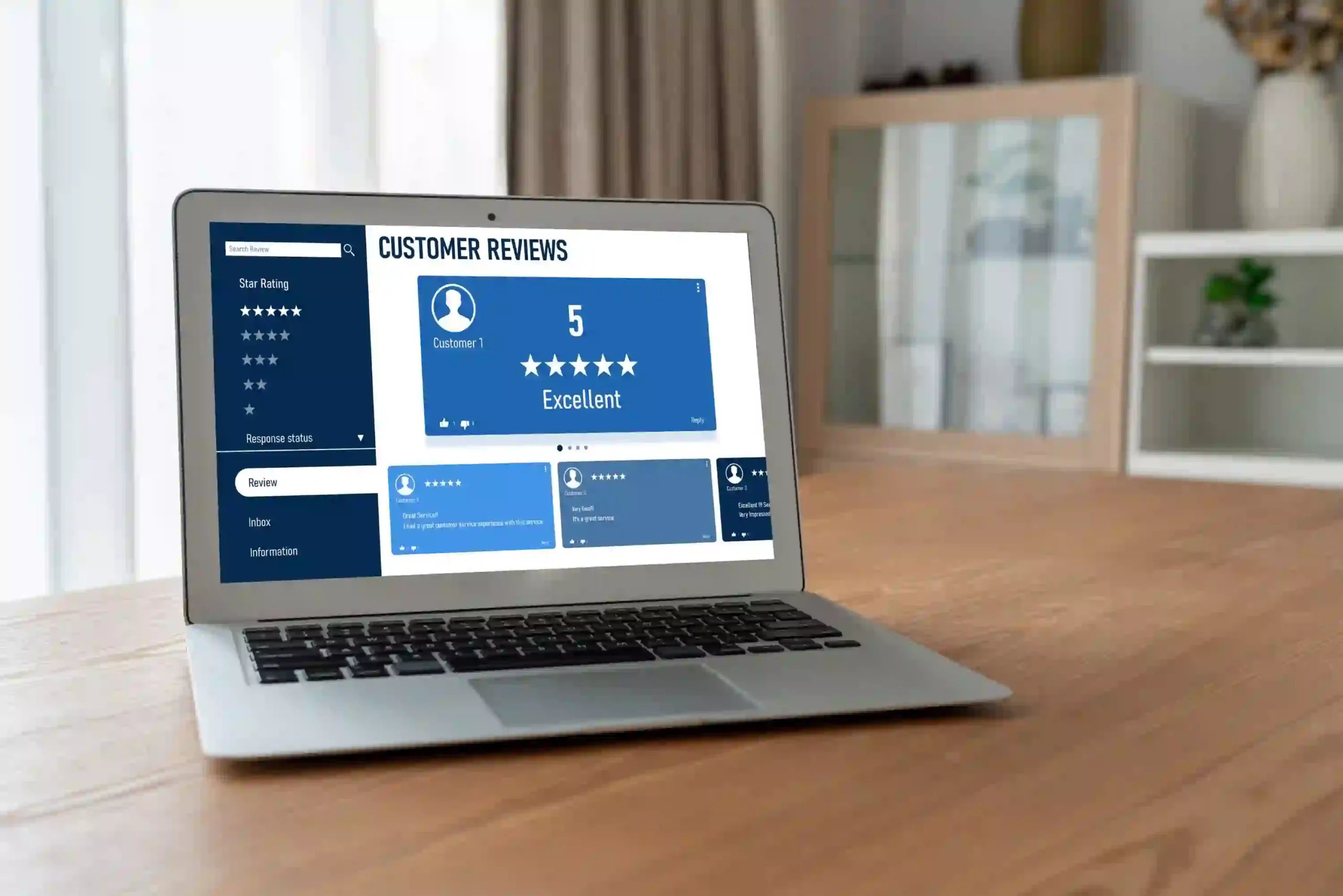How To Get Hospice Referrals
Understanding the process of acquiring hospice referrals is essential in today’s dynamic healthcare setting. This article will delve into the nuances of the referral process, from forging robust relationships with healthcare suppliers, enhancing your online visibility, to employing cutting-edge marketing tactics.
Key Takeaways
- Cultivating relationships with healthcare providers is critical to get more referrals. Educational events, personalized support, and regular communication are key.
- A solid online presence, such as effective reputation management, digital marketing investments, and a clear, informative website, is vital in our digital world.
- Raising awareness about hospice care options can boost referral rates. Information sessions, marketing materials, community collaborations, and social media engagement are great ways.
- Clear communication with healthcare providers, understanding patient eligibility for hospice care, and addressing patient concerns are crucial for successful hospice referrals.

Understanding Hospice Referrals
Hospice referrals are vital to the healthcare system, connecting patients with the compassionate, end-of-life hospice care they need. But it’s not just about making a connection – it’s about understanding the needs of patients, the roles of healthcare providers, and the intricacies of the referral process.
One example of a hospice referral could involve a primary care physician who notices that their patient with advanced-stage cancer has been experiencing uncontrolled pain and emotional distress despite aggressive medical treatments.
Recognizing that traditional interventions are no longer effective, they initiate the hospice referral process to ensure the patient receives comprehensive support services tailored to their unique needs and preferences.

CONTINUA LEARNING
Simplify Your Hospice Team’s Training and Skill Building
A complete online solution for your agency: more than 125 hospice courses, caregiver in-services, training plans, and more.
Hospice Referral Process: Who Can Make One?
Understanding who can make a hospice referral is essential to increase the number of referrals. Although physicians are often the primary source of referrals, it’s necessary to recognize that other healthcare professionals also possess this power.
For example, a dedicated social worker may work closely with terminally ill patients at hospitals or long-term care facilities and recognize when their clients would benefit from hospice support.
Similarly, nurses providing in-home services might observe declining health conditions and consult with family members about transitioning into hospice and palliative care. By casting a wider net and actively engaging these groups alongside doctors within your outreach efforts, you’ll increase the chances of securing more referrals for your hospice organization.

How to Get Hospice Referrals
Building strong relationships with healthcare providers, maximizing your online presence, and providing informational resources can all create a successful hospice referral strategy and keep your referral pipeline full.
Building Strong Relationships With Healthcare Providers
Establishing solid connections with healthcare providers is critical to growing your hospice agency’s referral base. Cultivating relationships with physicians, nursing homes, and other potential hospice liaisons can profoundly impact your agency’s success.
One way to achieve this understanding is by hosting educational events or in-service training sessions for medical staff members. These events showcase the benefits of referring patients to your hospice care facility and allow you to become a trusted resource for information on end-of-life care.
Additionally, consider reaching out directly through regular communication channels such as emails and phone calls, offering personalized assistance or resources tailored to their practice needs.
Maximizing Your Online Presence
A strong online presence is essential for any business today, and hospice agencies are no exception. One way to maximize your online presence is by focusing on your agency’s website.
Another critical aspect of maximizing your online presence is managing your reputation effectively. Monitoring online reviews and responding appropriately to negative feedback while promoting positive reviews through social media and other digital platforms is the key to success.
Finally, consider investing in targeted digital marketing campaigns that reach potential clients in specific geographic areas or demographic groups.
By maximizing their online presence, hospice agencies can increase their visibility among potential clients and referral sources while building trust through practical reputation management efforts.

Providing Informational Resources To Healthcare Providers And The Community
Providing informational resources to healthcare providers and the community is essential to obtain hospice referrals. Here are some strategies to consider:
- Host information sessions or webinars for healthcare providers, offering education on hospice care options, eligibility criteria, and patient satisfaction metrics.
- Develop marketing materials such as brochures and flyers that highlight the value proposition of your hospice agency and distribute them to healthcare provider networks.
- Collaborate with local community organizations and senior centers to offer educational resources on end-of-life care options.
- Utilize social media platforms to spread awareness about end-of-life care resources in your community.
- Offer palliative care resources and financial planning guidance to help patients and families understand their options for quality end-of-life care.
By providing informational resources to healthcare providers and the community, you can increase awareness about hospice care options, improve patient outcomes, and ultimately increase referral rates for your hospice agency.
Ensuring A Successful Referral
Communicating effectively with healthcare providers is crucial to ensure a successful hospice referral.
Communicating Effectively With Healthcare Providers
To ensure a successful referral, effective communication with healthcare providers is crucial. Building and maintaining solid relationships with them can help establish trust and credibility while allowing for open and honest communication.
Encourage feedback from doctors, nurses, and other healthcare professionals on how your hospice agency can better serve their patients.
Clear communication of what your hospice team does, how they support family members, and how they collaborate with all members of the patient’s medical team will be beneficial for them to refer patients faster if needed.
Developing a framework around provider preference makes it easier for referring physicians to simply put forth an order to initiate hospice care services through e-fax or email using electronic health records (EHR).

Understanding Patient Eligibility For Hospice Care
To ensure a successful referral, you must be an expert in patient eligibility requirements. First, the individual must have a life-limiting illness or condition with a prognosis of six months or less.
Additionally, they must be entitled to Medicare Part A and certified as terminally ill by a physician. It’s important to note that patients can still receive curative treatments while in hospice care if their treatment goals align with comfort measures rather than aggressive interventions.
For example, an elderly patient diagnosed with advanced-stage cancer may not initially meet the criteria for hospice care but could become eligible after undergoing further medical evaluations.
Hospice team members can work closely with physicians and other healthcare providers to assess eligibility accurately and determine the best action for patients requiring end-of-life care services.
Addressing Patient And Family Concerns
One of the most critical aspects of obtaining hospice referrals is effectively addressing patient and family concerns. Patients and their families may have fears or doubts about hospice care, such as uncertainty about your services or when to start hospice.
To address these concerns, listen to your patients and their families actively, and conduct family satisfaction score surveys. Listening includes understanding individual needs and providing educational resources that help them make informed decisions about end-of-life care options like palliative medicine or comfort care.
Being attentive to patient needs and offering supportive guidance throughout every step of the journey towards end-of-life care options like hospice eligibility criteria can result in better patient outcomes.

Measuring And Evaluating Referral Success
It’s essential to track where your referrals are coming from and analyze the data to improve outreach efforts, adapt strategies, and ensure ongoing success.
Tracking Referral Sources And Trends
As a hospice agency leader, tracking your referral sources and trends is vital for the success of your organization. Here are some tips to help you effectively track referral sources and analyze trends:
- Utilize CRM software: Customer relationship management (CRM) software can help you identify the best referral sources and new opportunities to generate more referrals.
- Measure referral success: By tracking the referrals received and analyzing data, you can determine which sources are most effective at generating referrals.
- Analyze referral sources: Understanding where your referrals are coming from can help you focus your outreach efforts on those sources that bring in the most patients.
- Adapt to changing trends: Referral sources may change over time, so staying current on industry changes and adjusting your outreach strategy is key.
- Share data with team members: Sharing information about successful referral sources with your sales team can help them better target their efforts and increase overall referral numbers.
By implementing these strategies, you can effectively track referral sources and trends, allowing your hospice agency to focus its outreach efforts better and ultimately provide quality end-of-life care to more needy patients.
Analyzing Data To Improve Outreach Efforts
Analyzing data is essential to increase the efficiency and effectiveness of your referral efforts. Collecting and examining data can help clarify your value proposition, identify areas for improvement, and guide strategic outreach efforts.
For example, using mortality follow-back surveys of patients who died in hospice can provide valuable information about the timing of referrals and patient preferences for end-of-life care.
Additionally, utilizing advanced data analytics models can help home health agencies and hospice providers increase market share by identifying high-potential referral sources in a specific market or region.
Providers can effectively leverage data analysis tools to improve their overall outreach strategy while enhancing patient outcomes through early access to quality end-of-life care.
Adapting Your Strategy To Changing Referral Trends
As the healthcare industry evolves, so do referral trends. Hospice agencies must stay ahead of these changes and adapt their strategies to remain relevant.
One way to do this is by regularly reviewing your data on referral sources and analyzing trends over time. Additionally, keeping up with technological changes and communication preferences among referral sources can be crucial for success.
For example, if more healthcare providers use social media or email to communicate, consider incorporating those channels into your outreach strategy.
Conclusion: The Importance Of Hospice Referrals For Quality End-of-Life Care
In conclusion, hospice referrals are essential for providing quality end-of-life care to patients with terminal illnesses. You can effectively obtain more referrals by building strong relationships with healthcare providers, maximizing your online presence, and providing informational resources to the community.
FAQs
How can hospice care providers increase their referrals?
Increase hospice referrals by strengthening relationships with healthcare providers, enhancing online visibility, and providing valuable resources and education about hospice care benefits to healthcare professionals and the community.
What are the primary sources of hospice referrals?
Hospice referral sources include healthcare professionals like physicians, nurses, social workers, hospitals, nursing homes, and community awareness programs educating about hospice care’s benefits.
How can hospice services get more patient referrals?
Hospice services can increase patient referrals by ensuring quality care, engaging in community education, optimizing their online presence, and building strong partnerships with healthcare facilities and providers.
What strategies can be employed to get more referrals from doctors?
To attract more doctor referrals, hospice providers should focus on building strong, trust-based relationships with physicians, offering regular updates on patient care, and demonstrating the positive impact of hospice care on patient well-being.
How to effectively market hospice to physicians?
Marketing hospice to physicians can be effective through direct communication, providing educational materials on hospice eligibility and benefits, and showcasing success stories and testimonials from patients and families to highlight the compassionate care and support provided.
Can you self refer to a hospice?
Yes, you can self-refer to hospice. If you believe hospice care is right for you, you can contact a provider directly. They’ll collaborate with your doctor to confirm your eligibility.
Who can be referred to hospice?
Anyone with a life-limiting illness, typically with a prognosis of six months or less if the disease follows its usual course, can be referred to hospice.
How do doctors decide to put someone on hospice?
Doctors consider hospice for patients when curative treatments are no longer effective, and the patient’s life expectancy is six months or less, based on the course of their illness.
What are hospice referrals, and who can make them?
Hospice referrals are medical recommendations to receive end-of-life care from a hospice organization for individuals with life-limiting illnesses. Typically, referrals come from healthcare professionals, including physicians, nurses, social workers, or family members.
How do I know if my loved one needs hospice care?
If your loved one suffers from a severe illness or condition that limits their lifespan to six months or less, they may benefit from hospice care.
How can I request a referral for hospice care?
To request a referral for hospice care, talk with your healthcare provider about whether you think this program would benefit your specific circumstances.

